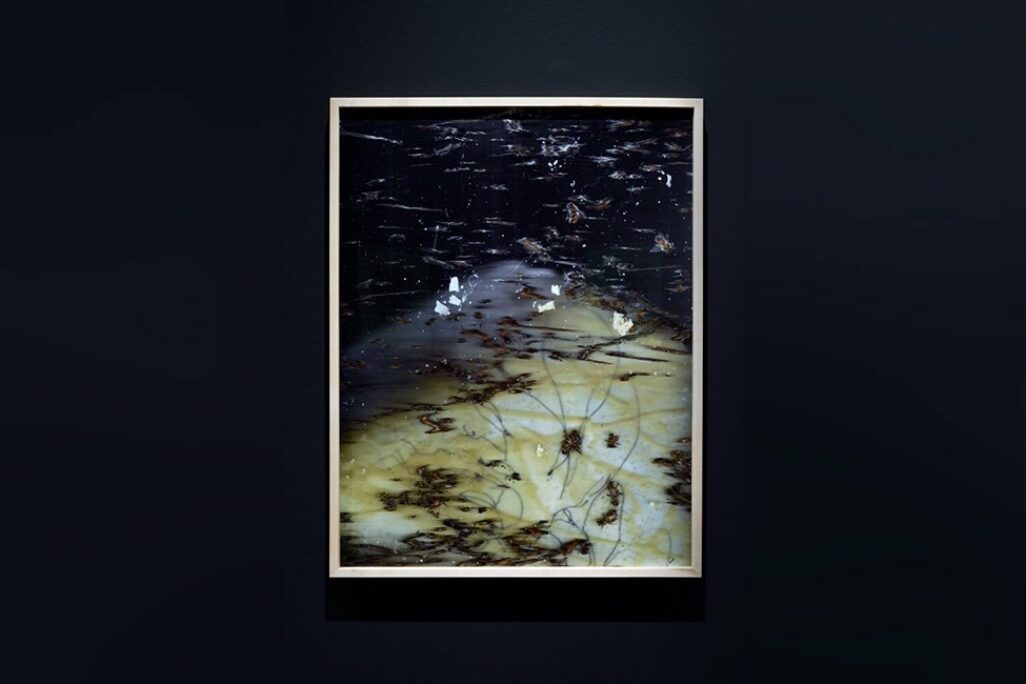Studio Sunday Online: What Comes Next?
About
Can you imagine 100 years into the future? Look at the Hive Scan artworks created by Aganetha Dyck, Richard Dyck, and a colony of bees. Draw what you think these bees could create in 100 years. This activity explores speculative fiction, or storytelling that asks, “what comes next?”. Make an artwork about what we think will happen next in these images. Imagine what these bees would create if they continued to create art for a hundred years.
About the Artwork
Aganetha Dyck worked together (or collaborated) with both her son Richard Dyck and a colony of bees to create the Hive Scan artworks! The human artists placed found objects (lace, drawings on Braille paper, and salt and pepper shakers) onto a flatbed scanner inside a bee hive. They let the bees transform the objects by building their waxy combs over them. This art series makes us think about the work done by insects and other species in the world.
This artwork also feels like a sneak peek through time at the artwork being created. You can see the bees in the scans, busy at work, suggesting that the artwork is still being created. The objects being covered and transformed by the bees also make us think about the passage of time, and how all things age and change.
About the Artist
Aganetha Dyck was born in 1937 near Winnipeg, Manitoba. She was raised in a Mennonite community. She briefly lived in Prince Albert, Saskatchewan from 1972 to 1976, and then moved back to Winnipeg. She began studying art in Saskatchewan, but continued to do so in Winnipeg afterwards.
Her early artworks were connected to household tasks and objects. For example, she created a series of works where she turned doing laundry into art. She washed and shrunk down wool clothes to make small sculptures. These early artworks were about the jobs and roles in a household that were usually considered women’s work.
Her later artworks make us think about environmental issues, and how animals and humans work together. She is concerned about what would happen if bees and other animals disappeared from the earth.
Aganetha and her collaborating artists keep asking us to look closer at the things we tend to overlook.
- Many artists collaborate, or work with other artists together on projects. If you could collaborate with any other animal to make art, who would you work with, and why?
- What work do species other than humans do in the world? What would the world look like if they stopped doing that work?
Studio Activity
Can you imagine 100 years into the future? Look at the Hive Scan artworks created by Aganetha Dyck, Richard Dyck, and a colony of bees. Draw what you think these bees could create in 100 years. This activity explores speculative fiction, or storytelling that asks, “what comes next?”
Supplies:
- Pencil, eraser, and sharpener
- Paper
- Art materials of your choice (pencil crayons, markers, crayons, pastels, etc.)
Instructions:
- Look at the Hive Scan artworks created by Aganetha Dyck, Richard Dyck, and a colony of bees. Think about how the bees have changed the objects left in their hive.
- We are going to make an artwork about what we think will happen next in these images. Imagine what these bees would create if they continued to create art for a hundred years. Some questions to ask yourself would be:
- If the bees kept building these same waxy structures for a hundred years, what shapes and forms would they make?
- In that time, would the way the bees work change? Will the bees evolve and create different, even smarter kinds of structures? Will they still make these structures to store honey, pollen, and their young, or will they have new reasons for building and creating?
- If humans keep affecting the lives of bees in negative ways, how might that change what these bees are building?
- If humans were to disappear from the world and bees and other creatures took over human spaces, what would they create?
- If humans and bees learned to cooperate in new ways, what kinds of artworks would they make together?
- After thinking about these questions, draw a picture of what you think these bees might create 100 years in the future. You could imagine that they keep adding to one of the Hive Scan artworks, or you draw something from a broader story of what bees might be making worldwide in the future.
- Once you’ve drawn your picture, tell a friend or family member about the story you’ve imagined for the bees in the future.

